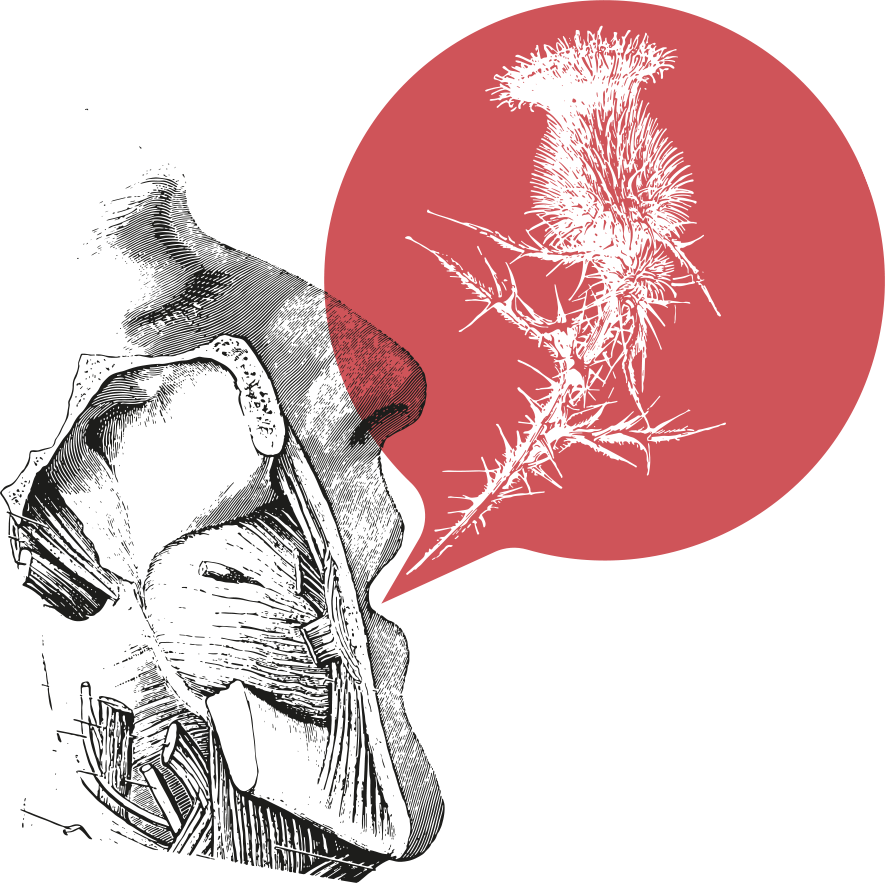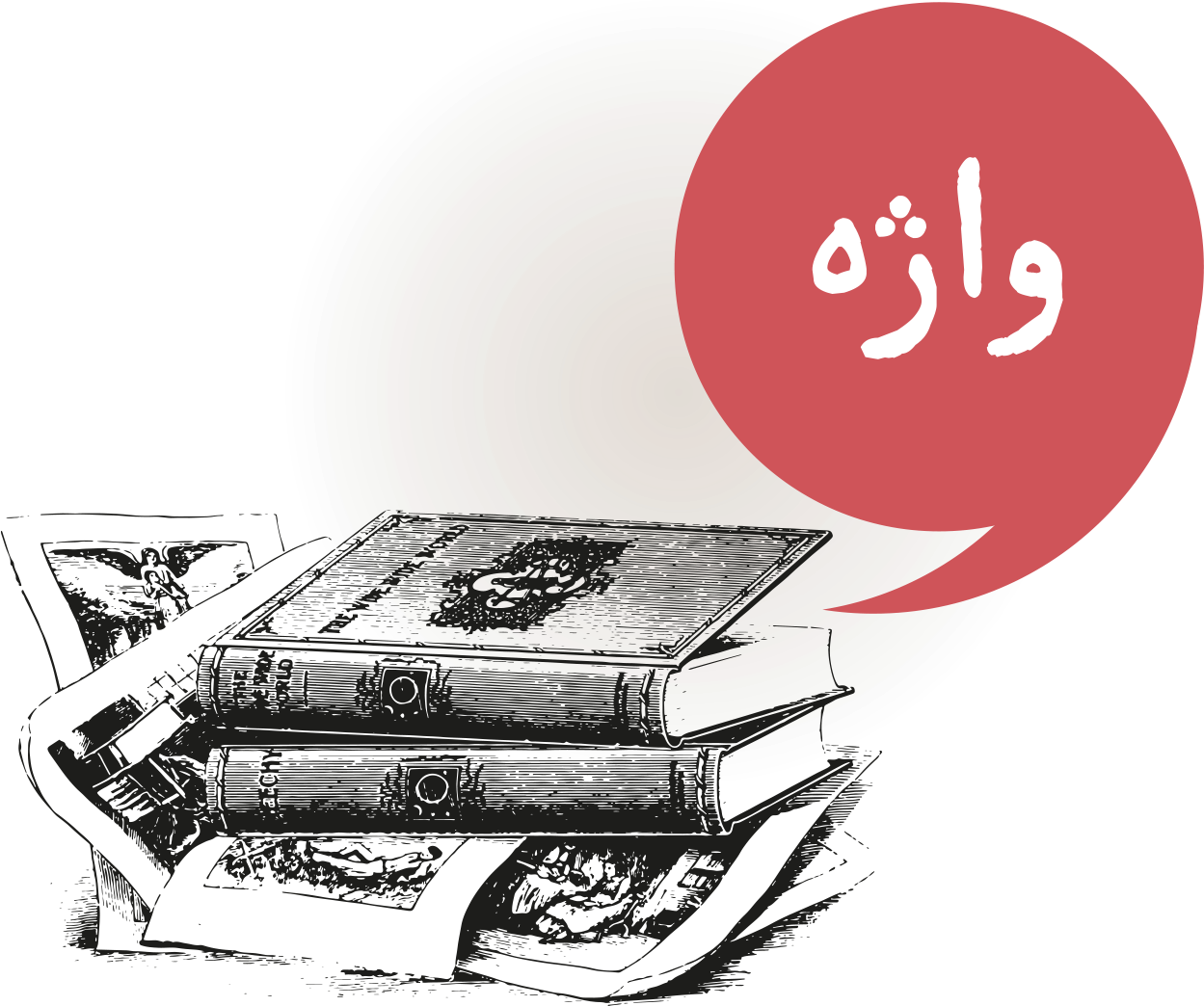The Arabic Alphabet: A Guided Tour
by Michael Beard
illustrated by Houman Mortazavi

Zhe is for Bijan
Zhe is the third of the four Persian letters that have been added to deal with sounds you won’t hear in Arabic. The sound of Zhe is the S of “measure,” the J of French (jupe, jour, bijou, jus), or the common mispronunciation of the hard J in “Beijing.” It is for indigenous Persian words still in use after the arrival of the Arabic alphabet, a glimpse of an earlier language. Today it also allows for proper transcriptions of words borrowed from European languages. Zhânvieh (through French) for January, Zhâpon for Japan. Dehkhoda’s massive Loghat-nâmeh, the OED of Persian, includes Zhen for Genoa, Zhâmâ’îk for Jamaica, Zhakobît for Jacobite. The last example may be a key to his political affinities.
The letter J is used for Zhe words in contemporary Turkish, though there aren’t many of them. There is less than a page of J words in Redhouse’s 1,292-page dictionary, most of them loans from French. Nine of them are on loan from Persian.
Household Words
Before Zhe was devised, you would just use Ze (Arabic Za’) and assume the reader would recognize the word from context, spoken but not visible on the page. And then sometimes pronunciation of Zh words would adjust to what the Arabic alphabet was able to express. Zhang, “rust,” became zang. Zhang still exists, with the same meaning, but you won’t see it often. If you look up zhang in a Persian/Persian dictionary the definition is likely to be zang.
Sometimes a Zhe word will evoke the substantial, resonant or sublime, as with the word zharf, “deep, profound.” It’s a respected Zhe word, the only Zhe entry in A.K.S. Lambton’s shorter Persian Vocabulary. And sometimes a Zhe word will send us back to the heroic world of pre-Islamic chivalry, as in Ferdowsi, like zhubin, a spear.’ More frequently, though, the Zhe words which persisted over the evolution of New Persian, the ones that slipped through the 28-letter Arabic mesh, are the words closest to home, the intimate ones: household words, words for the ordinary, humble and non-heroic. Often you have to dig through those dictionaries which include the obscure and forgotten to find them. Zhakfar means patient, meek, mild. Zhakâreh is quarrelsome, squabbling. Zhan means deformed. (A cultured Iranian friend has never heard of the last three. It’s a good thing we have dictionaries.) Zhulideh, definitely still in use, is to be disheveled, tousled, scattered in the wind. Zhendeh, also a linguistic survivor, means old, worn out, frayed, or a patched garment. Imperfect things can be a source of praise too. Hair which is zhulideh is a source of fascination. Patches or patched clothes can be the clothes of someone who has taken a vow of poverty, a mystic. Zhendeh is a positive image, as you can see in a couplet of Hafez:
Chandân bemân ke kharqeh-ye azraq konad qabûl
bakht-e javân-at az falak-e pir-e zhendeh-push[Stay as you are (or perhaps “be patient . . .”) until the sky’s patched blue (azraq) coat grants to you, though you are young, a spiritual elder’s patched robe (zhendeh).]

When a Zhe word names a plant it names a small one. Zhâzh is a thistle, evidently a disprized plant because the Steingass dictionary also lists “idle speech” as a secondary meaning. Some Zhe words are not just homely but obscure. Steingass defines zhâfeh as “a kind of fetid herb” (but, he adds, it also means a hedgehog). He gives up on zhâlkeh, and defines it as “name of a plant.” Zhenyân is anise. Zhadwâr is zedoary, which the curious reader will not find under jadvâr (though there are sources which will send you there). If you are like me you have to look it up in English — turns out to be Curcuma zedoaria, a plant whose roots are used as a stimulant, identified by botanist Berthold Laufer as a prized import from China. He traces the name back to Sanskrit nirvaşâ (with a dot under the S), which means, reassuringly, “poisonless.”
The slight and simple can be an image of beauty as well. A zhul is a lark. Mozhdeh is “good news.” Mozhgân are “eyelashes.” We are likely to know zhâleh as a woman’s name. It means “dew.” In a scene drawn by Hafez,
Ṣubḥ-ast o zhâleh mi-chakad az abr-e Bahmanî.
Barg-e ṣabûḥ sâz-o bedeh jâm yakmanî.[Morning has come. Dew is dripping from the clouds of Bahman. (Bahman is a winter month.) / Lay out a morning drink and bring a barrel of wine (a man of wine, today something like three kilos).]

Ṣubḥ is morning. Ṣabûḥ, from the same stem, is wine you drink in the morning. With his taste for contrasts Hafez has made the oversize container at the end of the couplet balance the slightness of the zhâleh a which drips from a branch at the beginning. In fact the zhâleh outweighs, in the mind, the outsize jâm, perhaps because the sound, zhâleh, more deeply rooted in history, is in this context more vivid and more zharf.
Bizhan
An occasional Zhe shows up in Ferdowsi’s Shâhnâmeh, often enough in the midst of names. Bizhan is the most famous — the son of Giv, who makes an incursion from Iran to the north, across the border into Turan, in order to hunt the wild boars which threaten the people of Erman. (It’s a famous story. Later, there was also a Bizhan-nâmeh, based on Ferdowsi.) He decides to visit the gardens of enemy king Afrasiab. Garden settings attract love stories, or vice versa, and sure enough he falls in love with Manizheh, the daughter of Afrasiab, king of Turan. Bizhan is from south of the border; a reader knows in advance that there will be trouble. Manizheh and Bizhan share a Zhe sound which is not what brings them together, anyway not necessarily, but the inevitable happens and a romance begins. A good love story should have something distinctive about it, and this one has the distinction of both a take-charge heroine and an abduction (not of Manizheh). Manizheh has Bizhan put to sleep (with the usual potion) and taken to her bedroom. It’s a good idea for a story, a bad one for the couple. Once caught, Manizheh is sent to wander in the wilderness; Bizhan is put into a pit. She finds him and keeps him fed until Rostam, the ultimate hero and mainspring of the Shâhnâmeh, arrives to set him free. Later Rostam will unite the couple and bring them to Iran.
There is an illustrated copy of the Shahnameh which was created under the patronage of Shah Ṭamasp in the early 16th century. It is one of those artifacts which (like ghazals or the patterns on carpets) may seem to define a culture. It is usually referred to as the Houghton manuscript, after the Arthur A. Houghton, who once owned the book and then in the 1960s began to dismantle it by selling individual pages to other collectors. It is a shame that his name is still attached to it, unless we see him as a cautionary tale. There are people who shouldn’t own bound manuscripts.
There is a picture of Bizhan in the garden (300 Verso), on a page which may or may not still be left in the book Houghton ransacked. (The book with the surviving pages is in the Museum of Contemporary Art in Tehran.) In the illustration, a scene from early on in the story, he is receiving a message from Manizheh’s attendant. Sitting cross-legged in the lower right, he wears an orange knee-length vest over a green long-sleeved tunic and what seem to be billowing pants, also green, with a yellow flowered pattern. A white turban with plumes easily two-feet high suggests a breeze as he leans leftward to hear the message more clearly. He is holding a blue bow at his side (no arrows), but he doesn’t seem dressed for hunting.
It exemplifies what is sometimes said of Persian miniatures, that they don’t focus on a particular character. A European equivalent is Breugel’s painting of the fall of Icarus (subject of W.H. Auden’s great poem “Musée de beaux arts”), where you see only Icarus’s legs, as they sink into the sea. Bizhan shares something with Icarus. It takes a while to find him. Manizheh’s tent is in the background. A stream runs between them, a reminder of their separation. It took me a while to figure out which character was which. Once you’ve found him, there is a lot else to notice. The trees, bushes, and a strip of flowers deserve an essay in themselves. (There may be such an essay already.) The same is true of the frame surrounding the picture and containing the text, which for some viewers is as striking as the picture. The boundary is not just a line but a row of very thin parallel lines, blue, orange, red, green, separated by spaces of yellowish brown. The frame is an incomplete rectangle with a missing strip at the upper right corner. There are two inserts of writing — a cartouche on the upper-right corner, containing five couplets, and a shorter one, with two couplets, on the lower left. It is difficult to say why those two rectangles don’t seem out of place. Perhaps it’s because the curves in the letters echo the arcs of the scene (meandering stream, the always curving narrow limbs of bushes and flowering trees, hills as high as they are wide). You wonder how many people were expected to read it, or, for those who did, how they sorted out the effects of the pictured scene and the effect of the written narrative. They probably didn’t read it the way we read a graphic novel, in order to hurry to the next panel. It’s a script to linger over, with nice fat letters. When you get to a cluster of three dots (squares with rounded corners) you see the word become a little more substantial. The triangle of dots over the Zhe in Manîzhêh or Bîzhan give both names some bulk.
Bijan

Another Bizhan, Bijan Pakzad (1944-2011), whose showroom at 420 North Rodeo Drive has been a landmark in the fashion industry since 1976, carries on the tradition of fashionable Bizhans into the 21st century. Spelled with a J, Bijan, known only by his first name, shows to the casual observer no signs of being from Iran. The J may sound like a generic mark of the exotic, possibly implying a French name.
Iranian names are becoming unremarkable in American life, undergoing the process of Italian, Irish or Polish names, once conspicuous signs of the exotic, now just American names. The economist Mark Zandi, the actress Sarah Shahi, the journalists Soraya Sarhaddi Nelson and Christiane Amanpour wear names now assimilated and unremarkable to the uninitiated. Bijan kept a foreign aura, but not an Iranian one.
Persianissimo
Vâzheh is “word,” or rather vazheh is the word for “word.” A vâzheh-nâmeh is a dictionary, a loghatnâmeh. Not long ago I went to look up vâzheh in the Dehkhoda’s Loghatnâmeh online: the screen showed first the title page, on which the word vâzheh-nâmeh was printed in ornamented script. The indigenous Persian word vâzhe had been put in the place of the Arabic loan word loghat. I suspect the editors wanted to make it not just a Persian dictionary, but a dictionary as Persian as possible.
